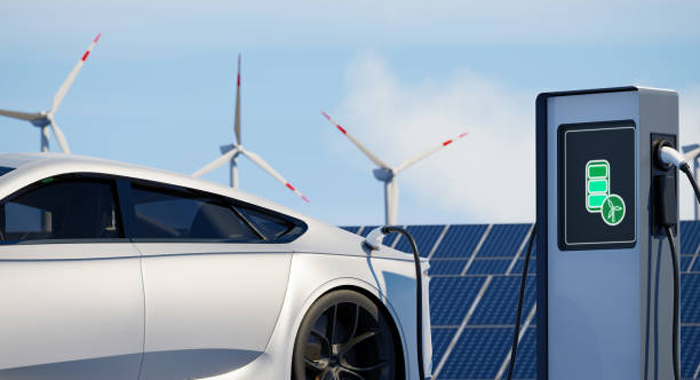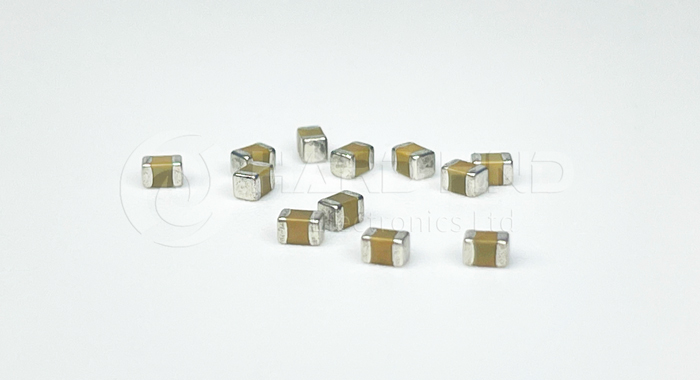With the development of emerging industries, such as Electronic Vehicle, that provides huge market space for capacitors. Furthermore, defense and downhole drilling applications also have challenged the capacitor industry. It requires electronic components that support operating in exceptionally high temperatures for longer periods.

Source: Internet
Capacitors are ubiquitous in any electronic device and system. Stable electrical performance at high temperatures is required to grow these newer demands. This article is about the selection of ceramic capacitor for high-temperature applications.
High Temperature Rating Capacitors
For most high-reliability applications, it is important to maintain optimum performance within specifications and ensure a long operating life.
To comply with the development of emerging industries, components with high-temperature resistance and high-frequency characteristics are required.
Capacitors includes Ceramic capacitors, Tantalum capacitors, Film capacitor, and Aluminum electrolytic capacitors. Aluminum electrolytic or Film capacitors, are limited to a maximum temperature range of 125ºC - 150ºC or even lower. While Ceramic and Tantalum capacitors are able to achieve higher temperature ratings.

Ceramic Capacitors
Multilayer Ceramic Capacitors are immensely popular in a variety of applications because of their volumetric efficiency and cost-efficiency. It is the essential passive component in almost all electronic circuits.
Significantly, it can used for applications operating at temperatures above 175℃. This feature makes it widely addressed in automotive, industrial, aviation, and other devices that require stable operation in a tough environment.
For automotive applications, it is widely used in power systems, control systems, security systems, comfort systems, infotainment systems, etc. As many as 18,000 MLCCs are used in an electric vehicle.
Temperature Coefficient
Due to different dielectric materials, the effect of temperature on ceramic capacitors varies greatly. Temperature coefficient, capacitance parameters, and capacitance specifications need to be considered when selecting. For some extremely high-temperature applications, high-temperature ceramic capacitors can be used.
Commonly used specifications of MLCC include C0G (NP0), X7R, Z5U, Y5V, etc. Capacitors of different materials have different characteristics and uses.
The most commonly used C0G has temperature compensation features. Its filling medium consists of rubidium, samarium, and some other rare oxides. The capacitance change of C0G is 0±30ppm/℃ when the temperature is from -55℃ to +125℃, and the capacitance change with frequency is less than ±0.3ΔC.
C0G dielectrics have much more stable capacitance over a temperature range than X7R dielectrics. But most of the historical data has been taken in the -55°C to +125°C range or sometimes up to 150°C.
For instance, the High-Temperature C0G Radial Molded Capacitors of KEMET compared with X7R radial molded parts. The new high-temperature C0G radial modeled capacitors' stability remains intact even at up to 250°C.
Even though the starting capacitance of the C0G dielectric is much lower than comparable-sized X7R dielectric capacitors, the fact that the loss in capacitance over temperature is very low.
C0G capacitors have different capacitance and dielectric loss characteristics with frequency depending on the package. Generally, larger package sizes have better frequency characteristics than smaller package sizes.
Take C1206H104J3GAC7800 as an example. It is KEMET’s High Temperature surface mount C0G Multilayer Ceramic Capacitors (MLCCs). Constructed of a robust and proprietary C0G/NP0 base metal electrode (BME). It packaged in 1206, 25V voltage rated, 0.1 µF capacitance.

Source: C1206H104J3GAC7800 Datasheet
X7R can produce capacitors with larger capacities than NP0 dielectrics. The performance of X7R capacitors is relatively stable. As temperature, voltage, and time change, its unique performance changes are not significant. Therefore, it can usually be used in DC blocking, coupling, bypass, filters, and medium and high-frequency circuits with high-reliability requirements.
However, the temperature characteristics of the X7R capacitor are inferior to those of the C0G. When the temperature is from -55℃ to +125℃, its capacity changes by 15%. It is also different under different voltage and frequency conditions. It changes with time, changing about 1%ΔC every 10 years, which means a change of about 5% in 10 years.
Y5V is often used to produce large-capacity capacitor products with larger specific volumes and higher nominal capacity. It is sensitive to test conditions such as temperature and voltage, and its temperature stability is the worst. Often used to replace low-capacity aluminum electrolytic capacitors. However, because its capacity can vary from +22% to -82% in the range of -30°C to 85°C, it is gradually replaced by X7R and X5R.
The operating temperature of Z5U capacitors is between +10°C to +85°C, the capacity changes from +22% to -56%, and the maximum dielectric loss is 4%. Its capacitance is greatly affected by the environment and working conditions, and its aging rate is also the largest, which can decrease by 5% per 10 years. But its size is small, and its capacitance is the largest under the same volume, its equivalent series inductance (ESL) and equivalent series resistance (ESR) are low, and its frequency response is good.
In general, sorted by temperature characteristics and reliability, C0G>X7R>Z5U>Y5V. Its dielectric constant also decreases sequentially, so the maximum capacity that can be produced with the same size and withstand voltage also decreases sequentially.
Ceramic Capacitors Selection Guide
Although capacitors based on C0G, X5R, and X7R dielectrics can be used at high temperatures of 200°C, their performance will be somewhat attenuated. Therefore, when deciding whether a capacitor is suitable for high-temperature environments, it is necessary to consider the impact of thermal stress and temperature rise on basic electrical properties such as capacitance, dissipation factor, and insulation resistance.
Thermal stress alone can cause electrical failure. Thermal breakdown occurs when a medium generates heat faster than it can dissipate it. The conductivity of the medium will increase, generating more heat, resulting in unstable capacitor performance.
Usually, under high temperature and high-pressure conditions, it is necessary to select capacitors with higher insulation resistance to prevent a vicious cycle due to increased leakage, leading to capacitor failure.
When selecting MLCC, if the requirements for operating temperature and temperature coefficient are very low, Y5V can be selected. Under normal circumstances, X7R can be selected for most applications. If the requirements are higher, C0G must be selected.